Jamie Shear keeps his iMac just behind the worn wooden worktable where he uses a turkey quill and homemade ink to inscribe Hebrew scriptures on calfskin parchment for Jewish ritual objects such as Torah scrolls, mezuzahs and tefillin.
Shear seamlessly shifts between old and new technologies, one for holy objects and the other for artworks. They both use the same 22 letters of the Hebrew alphabet whose forms are laden with mystical meanings.
Many visitors to Israel of all faiths are joining tours and workshops to learn about the ancient calligraphic artform and the spiritual mysteries of the Hebrew letters from English-speaking scribes like Shear, and to purchase Hebrew calligraphy artwork for their homes.
Handwritten scrolls form the heart of three basic Jewish ritual objects: the Torah (Five Books of Moses), mezuzah (a small case enclosing passages from Deuteronomy 6:4-9 and 11:13-21, affixed to the doorposts of a Jewish house), and tefillin (a pair of black leather boxes containing four biblical passages, wrapped around the head and arm during morning prayers). A traditional scribe (sofer in Hebrew) also writes megillah scrolls containing the biblical books of Esther, Ruth, Song of Songs, Ecclesiastes and Lamentations.
LETTERS & WONDERS Chabad Gallery, 4 Cardo St., Old City of Jerusalem

Jamie Shear was raised in Montreal and became enchanted with scribal arts as a teen when he saw a demo by a scribe at a Jewish summer camp. He moved to Israel, earned a degree in biology at Bar-Ilan University and apprenticed in 1991 with Jerusalem Torah scribe and singer-songwriter Chaim David Saracik.
In his Letters & Wonders gallery in the Cardo, the ancient Roman marketplace beneath the Old City of Jerusalem, Shear creates and displays his scribed parchments as well as decorative marriage contracts (ketubot) and artwork in many styles including micrography, creating a picture composed of tiny Hebrew letters.
He’s motivated by the beauty of the Hebrew letters, their depth, shapes and inherent meanings. “The scribal arts are always the core of my work,” he says.
People visiting from North and South America, Europe and Asia come for workshops on and offsite where Shear demonstrates and explains his craft.
“Many people are thirsty for the content that is rich in our culture. For others, our ancient script is fascinating because of each letter’s layers of meaning, from simple to mystical,” Shear says. “I love the human aspect of sharing these ideas and seeing people’s awed reactions to what I do.”

He writes religious texts on calfskin parchment with a turkey-feather quill using ink mixed according to an ancient Talmudic recipe: ground, cooked oak gallnut high in tannic acid; kankantum (iron sulfate), which turns the ink black (some scribes use pomegranate skin extract); and gum arabic, the sap of the acacia tree, which binds the pigment to the parchment.
Shear is now completing his 11th Torah scroll. The 18-month-long project includes sewing together the segments of parchment with thread made of sinews. The joined parchment is wound around wooden spools.
When families come to purchase tefillin for a bar mitzvah, Shear explains the process of how the leather boxes and parchments are produced and ceremoniously passes down the quill to the bar mitzvah celebrant, symbolizing the transmission of the tradition.
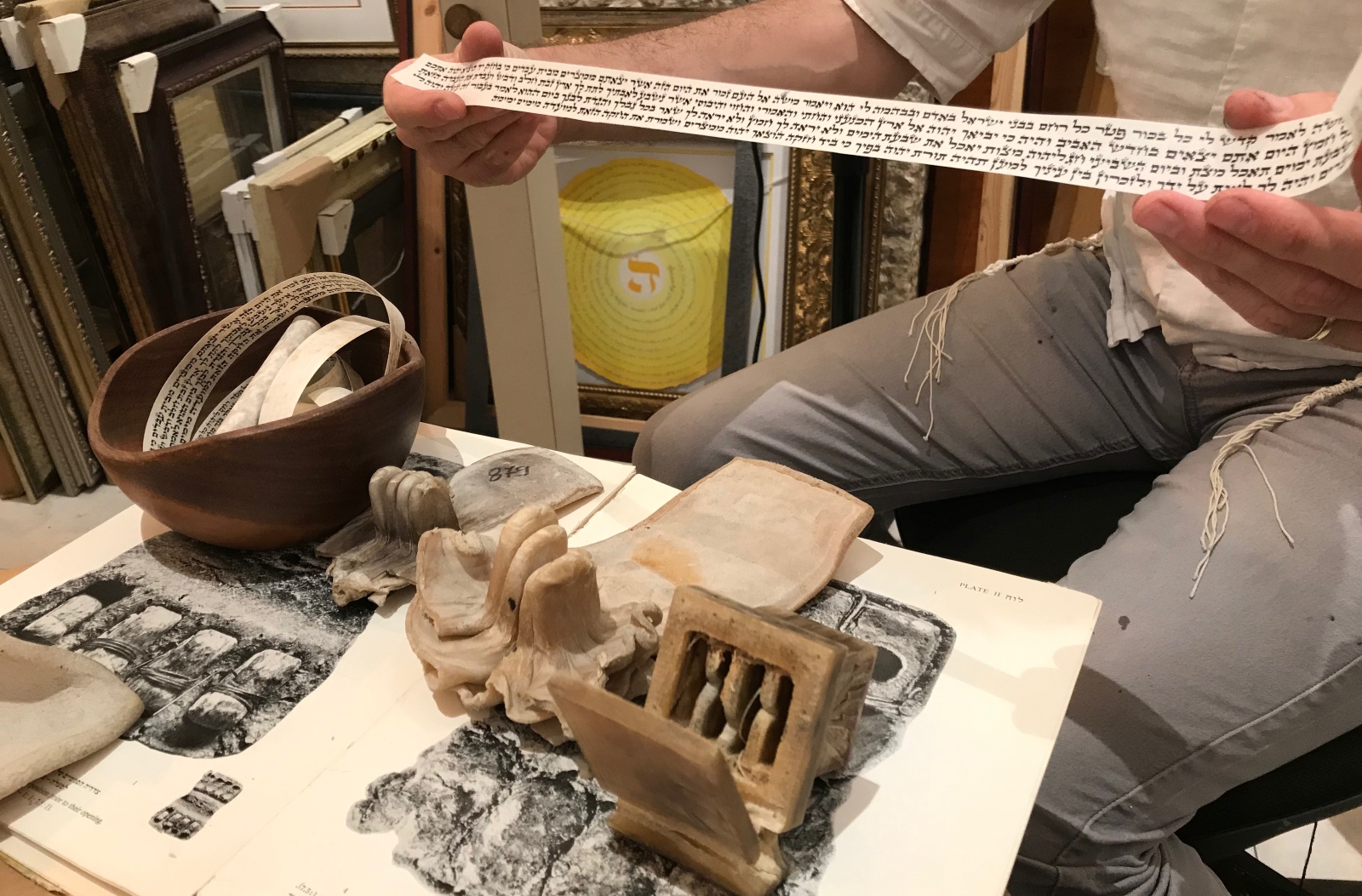
For his artworks, Shear uses a variety of materials – acrylic, watercolor and oil paints applied with bamboo quills, brushes and pens on surfaces including leather, handmade paper and canvas, as well as computer-generated works using his iMac, Wacom tablet and stylus.
His products are sold in the shop and online, shipping worldwide.
THE JERUSALEM SCRIBE, Four Sephardic Synagogues complex, 18 Beit El St., Old City of Jerusalem
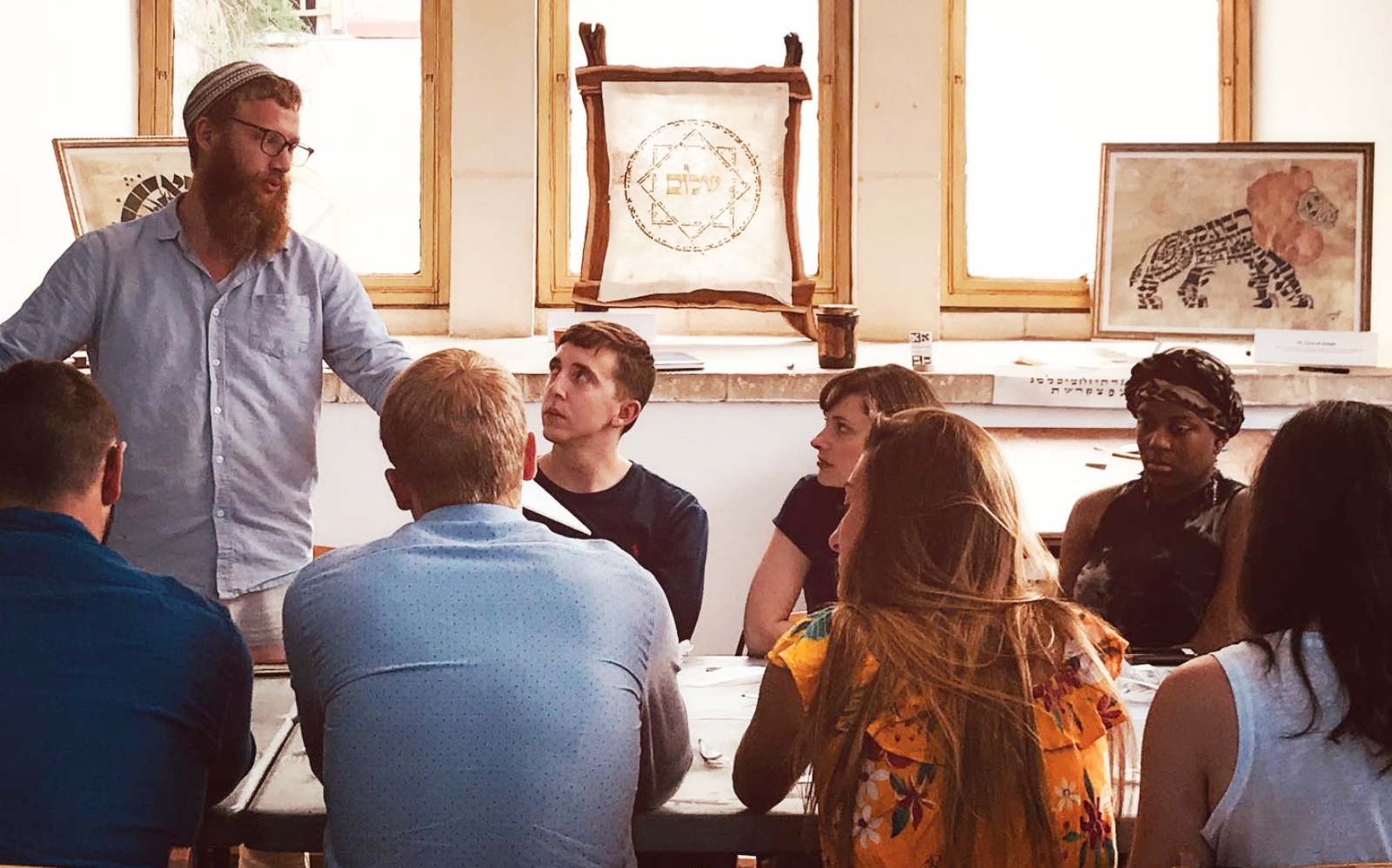
A 30-year-old scribe originally from Minneapolis, Kalman Gavriel Delmoor trains scribes and creates inspirational artwork based on biblical texts and letters of the Hebrew alphabet.
He leads workshops and writing meditations for tourists of all ages, backgrounds and faiths. And he sells his readymade and custom works online and in his studio inside the Four Sephardic Synagogues site in the Old City.
“The scribal tradition is an artform in which I can express myself in a way a religious teacher could not do. As a millennial, I love making this art accessible to young people like me,” says Delmoor.
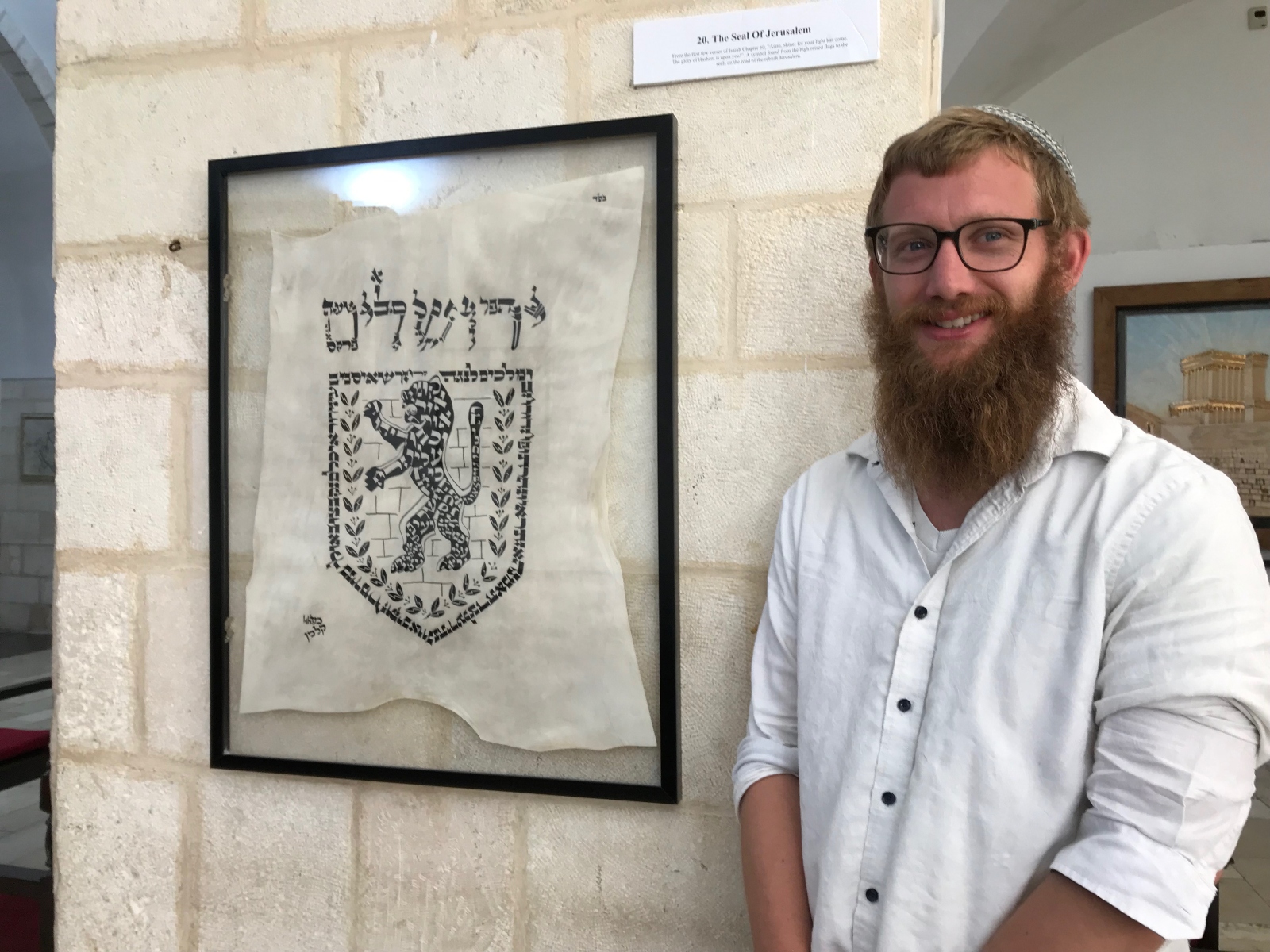
He does not do micrography because he prefers to keep the viewer’s focus on the letters themselves.
“The letters of the Hebrew alphabet are my raw materials and I want every letter to be relevant, beautiful and legible,” he says of his minimalist style.
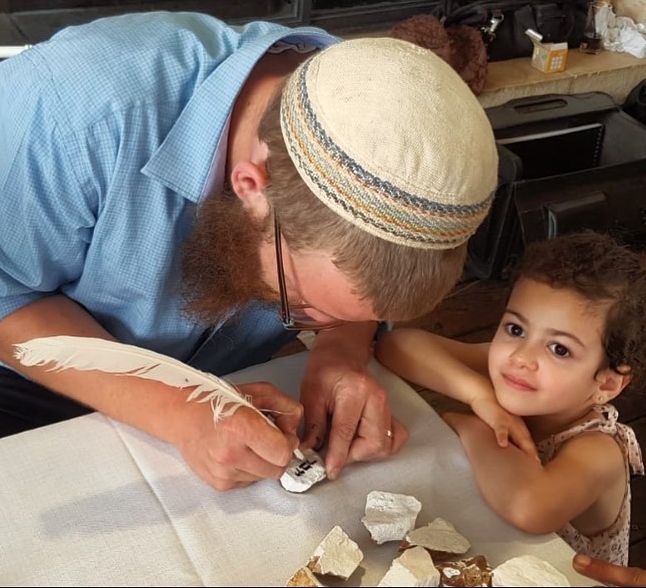
One of Delmoor’s works features only the four letters of the Hebrew word for “love,” ahava –aleph, heh, bet, heh. Highlighted are the middle heh and bet, the root of the word, which means “give.” The simple work therefore hints at the core meaning of love.
Recently, a group of Iranian Muslim refugees living in New York came for a workshop as part of an interfaith group. “We taught each other how to write ‘peace’ in Hebrew and Arabic,” Delmoor relates.
“I believe the biggest impact I can make on someone is to show them how to write a Hebrew letter. People especially love writing their name in Hebrew. Once you taste that experience, you never forget it.”
Delmoor had his first solo exhibition, “Letters of Light,” last summer.
OTZAR HASTAM, 62 HaGedud HaShlishi St., Safed (Tzfat)
Established 10 years ago in a former hotel on the summit of Mount Canaan in the Upper Galilee, Otzar HaSTAM is the largest center in the world engaged in writing scrolls for Torahs, tefillin and mezuzahs (the Hebrew acronym for these items is STAM, and otzar means “treasure”).
The Visitor Center offers a fully immersive experience. First you are seated in a revolving theater to watch a partially 3D presentation (in English, Hebrew or Russian) about Jewish scribal techniques and the significance of the Hebrew alphabet.

Then you sit with a professional scribe who shows you – with the help of an overhead projector — how he does his craft and gives you parchment and quill to try your hand at it.
Finally, you enter a second theater to take a fun automated quiz testing your knowledge about Torah, tefillin and mezuzah. For example, does Jewish law require putting a mezuzah on the doorpost of one’s office? (Answer: In addition to a person’s home, any room used for working or relaxing requires a mezuzah.)
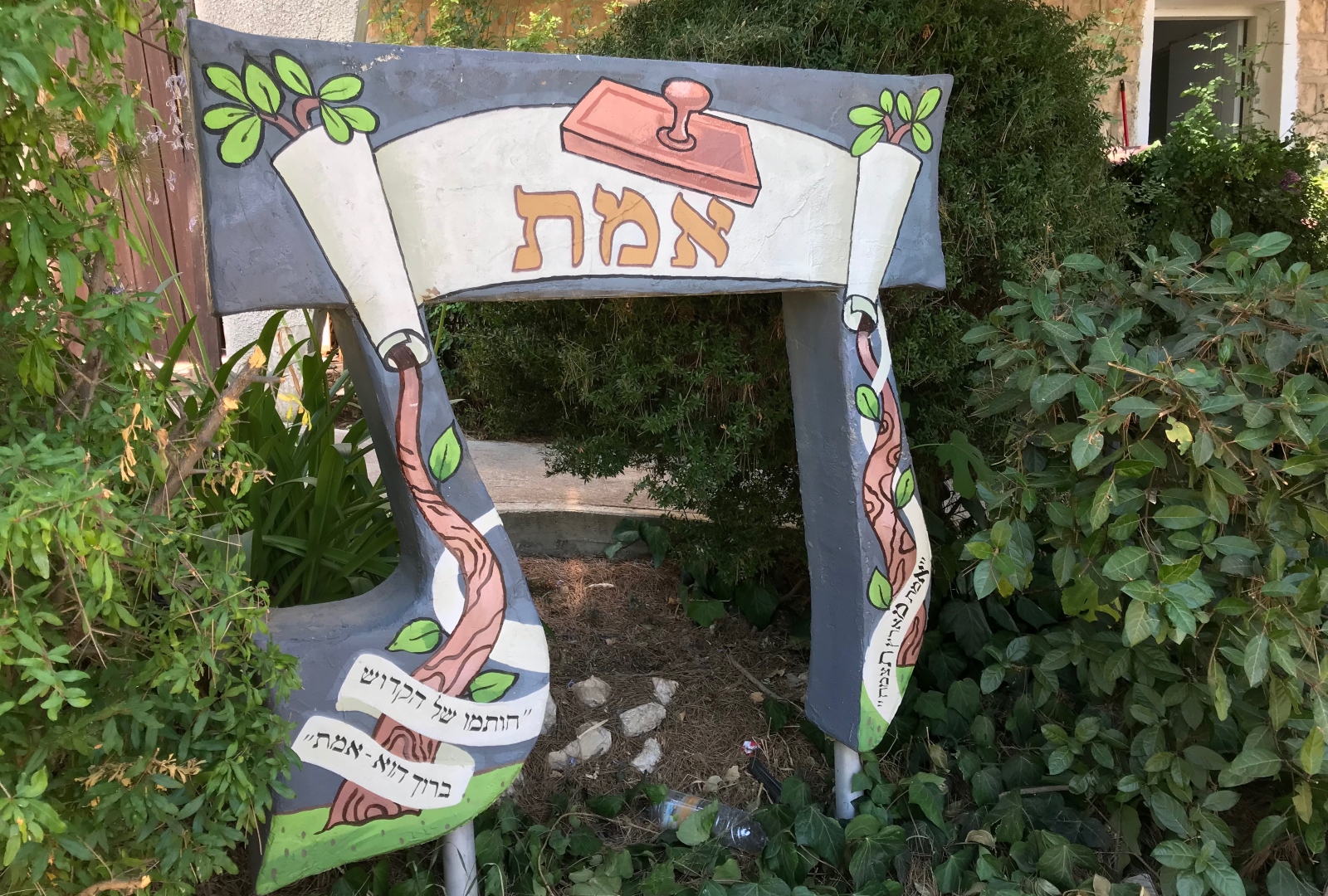
Outside the center, giant sculptures of the Hebrew letters are set in a landscaped garden with a magnificent view.
Originally posted at israel21c.org
